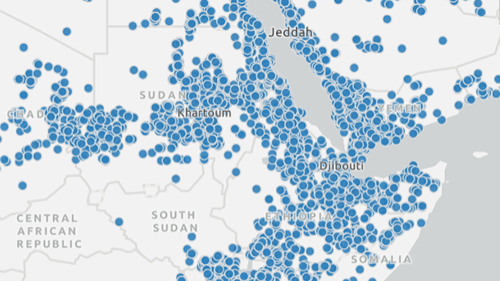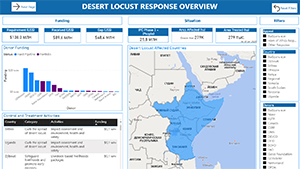Desert locust crisis 2020-2021
Starting in early 2020, a massive desert locust upsurge broke out across greater Eastern Africa, Southwest Asia, and the area around the Red Sea, as favourable climatic conditions allowed widespread breeding of the pest.
FAO has designated the 2020 Desert Locust upsurge as one of its highest corporate priorities and is actively engaged with governments to support them in containing this unprecedented threat to food security.
What is the role of FAO in locust control?
FAO closely monitors the global Desert Locust situation 24/7 and provides forecasts, early warning and alerts on the timing, scale and location of invasions and breeding through its global Desert Locust Information Service (DLIS).
All locust-affected countries transmit locust data to FAO who in turn analyse this information in conjunction with weather and habitat data and satellite imagery in order to assess the current locust situation, provide forecasts up to six weeks in advance and issue warnings on an ad-hoc basis.
FAO prepares monthly bulletins and periodic updates summarizing the locust situation and forecasting migration and breeding on a country by country basis.
Furthermore, FAO undertakes field assessment missions, strengthens national capacity, coordinates survey and control operations as well as emergency assistance during locust upsurges and plagues.
Key Facts
Where are Desert Locust found?
During quiet periods (known as recessions) Desert Locusts are usually restricted to the semi-arid and arid deserts of Africa, the Near East and South-West Asia that receive less than 200 mm of rain annually. This is an area of about 16 million square kilometres, consisting of about 30 countries.
Although the Desert Locust is considered to be the most important species of locust due to its ability to migrate over large distances and rapidly increase its numbers, there are several other important species of locusts throughout the world:
- African Migratory Locust (Locusta migratoria migratorioides) - Africa;
- Oriental Migratory Locust (Locusta migratoria manilensis) - South-East Asia;
- Red Locust (Nomadacris septemfasciata) - Eastern Africa;
- Brown Locust (Locustana pardalina) - Southern Africa;
- Italian Locust (Calliptamus italicus), from western Europe to Central Asia;
- Moroccan Locust (Dociostaurus maroccanus) - North-West Africa to Asia;
- Bombay Locust (Nomadacris succincta) - South-West to South-East Asia;
- Australian Plague Locust (Chortoicetes terminifera) - Australia;
- Tree Locusts (Anacridium sp.) - Africa, Mediterranean, Near East.




